Search Result
Results for "
hyperplasia
" in MedChemExpress (MCE) Product Catalog:
8
Isotope-Labeled Compounds
| Cat. No. |
Product Name |
Target |
Research Areas |
Chemical Structure |
-
- HY-113405
-
-
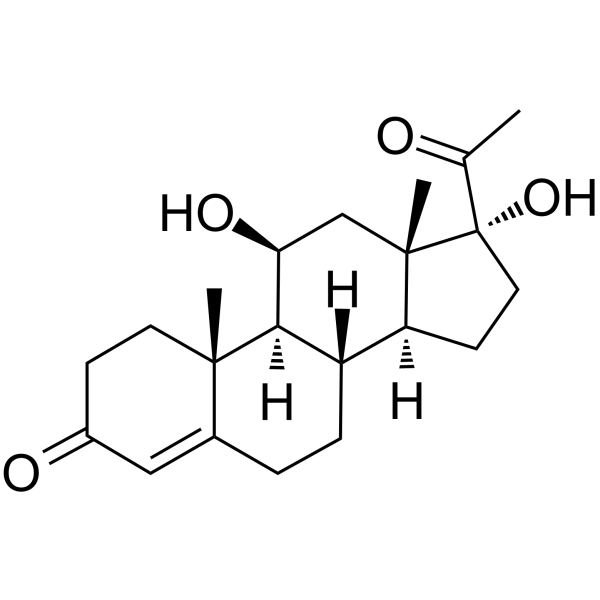
-
- HY-113603
-
|
SPR001; LY2371712
|
CRFR
|
Cancer
|
|
Tildacerfont is a potent and orally active corticotrophin-releasing factor type 1 (CRF1) receptort antagonis. Tildacerfont effectively reduces adrenocorticotropic hormone (ACTH) and adrenal androgen levels. Tildacerfont has favourable safety profile. Tildacerfont can be used for researching congenital adrenal hyperplasia .
|
-
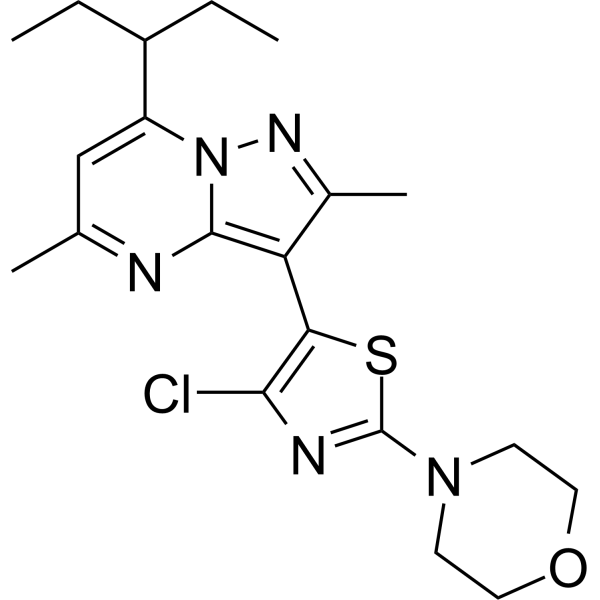
-
- HY-P1442
-
|
|
Adrenergic Receptor
|
Cancer
|
|
AdTx1 is a selective α1A-adrenoceptor antagonist (Ki: 0.35 nM). AdTx1 can be used for research of benign prostatic hyperplasia .
|
-

-
- HY-156522
-
|
|
CFTR
|
Endocrinology
|
|
CRF1 receptor antagonist-1 (Compound 2) is a CRF1 receptor antagonist. CRF1 receptor antagonist-1 can be used for research of congenital adrenal hyperplasia (CAH) .
|
-
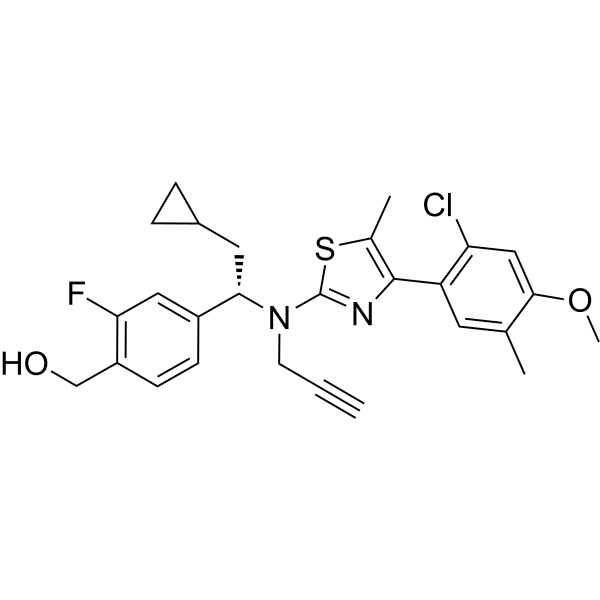
-
- HY-106203
-
|
SSR-125543
|
CFTR
|
Metabolic Disease
|
|
Crinecerfont (SSR-125543) hydrochloride is a potent, orally active, non-peptide CRF1 receptor antagonist. Crinecerfont can be used for Classic congenital adrenal hyperplasia (CAH) research . Crinecerfont is a click chemistry reagent, it contains an Alkyne group and can undergo copper-catalyzed azide-alkyne cycloaddition (CuAAc) with molecules containing Azide groups.
|
-
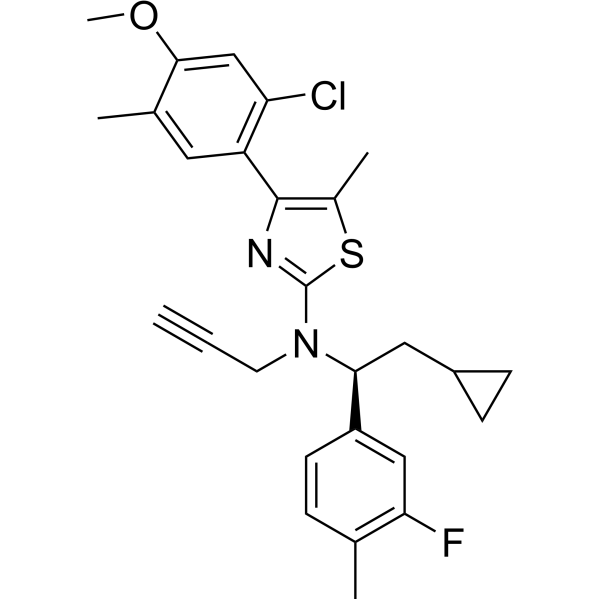
-
- HY-106203A
-
|
SSR-125543 hydrochloride
|
CFTR
|
Metabolic Disease
|
|
Crinecerfont (SSR-125543) hydrochloride is a potent, orally active, non-peptide CRF1 receptor antagonist. Crinecerfont can be used for Classic congenital adrenal hyperplasia (CAH) research . Crinecerfont (hydrochloride) is a click chemistry reagent, it contains an Alkyne group and can undergo copper-catalyzed azide-alkyne cycloaddition (CuAAc) with molecules containing Azide groups.
|
-
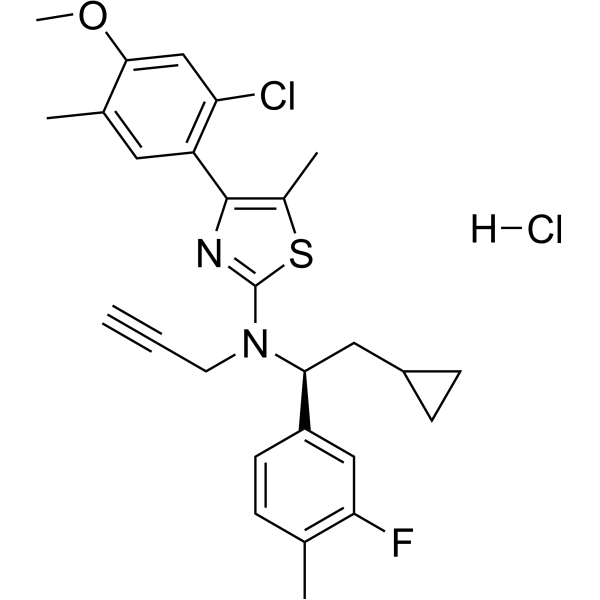
-
- HY-B0661
-
-

-
- HY-B0391B
-
|
KT-611 hydrochloride; BM-15275 hydrochloride
|
Adrenergic Receptor
|
Cancer
|
|
Naftopidil hydrochloride (KT-611 hydrochloride) is a selective alpha1-adrenoceptor antagonist, with Kis of 3.7 nM, 20 nM and 1.2 nM for the cloned human α1a-, α1b- and α1d-adrenoceptor subtypes, respectively. Naftopidil hydrochloride has antiproliferative effects. Naftopidil hydrochloride can be used for the research of prostate hyperplasia .
|
-
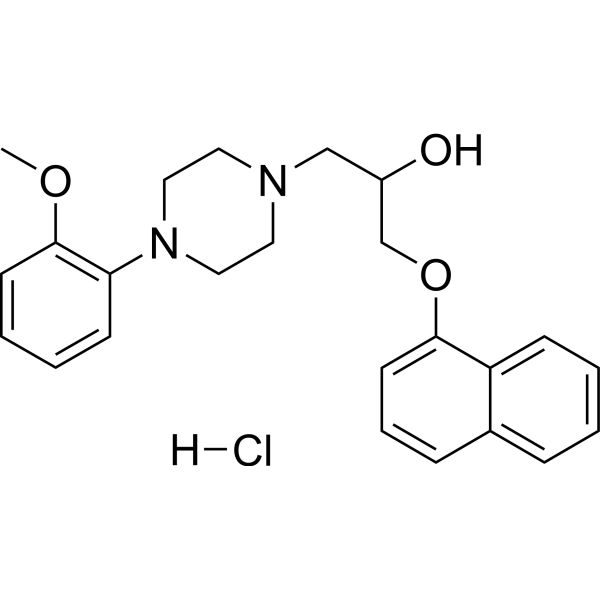
-
- HY-P3501
-
|
NX-1207 free acid
|
Apoptosis
|
Cancer
|
|
Fexapotide (NX-1207 free acid) induces apoptosis selectively, reducing prostate volume at a cellular level. Fexapotide can be used in lower urinary tract symptoms (LUTS) and benign prostatic hyperplasia (BPH) research .
|
-

-
- HY-P3501A
-
|
NX-1207 TFA
|
Apoptosis
|
Cancer
|
|
Fexapotide (NX-1207) TFA induces apoptosis selectively, reducing prostate volume at a cellular level. Fexapotide can be used in lower urinary tract symptoms (LUTS) and benign prostatic hyperplasia (BPH) research .
|
-
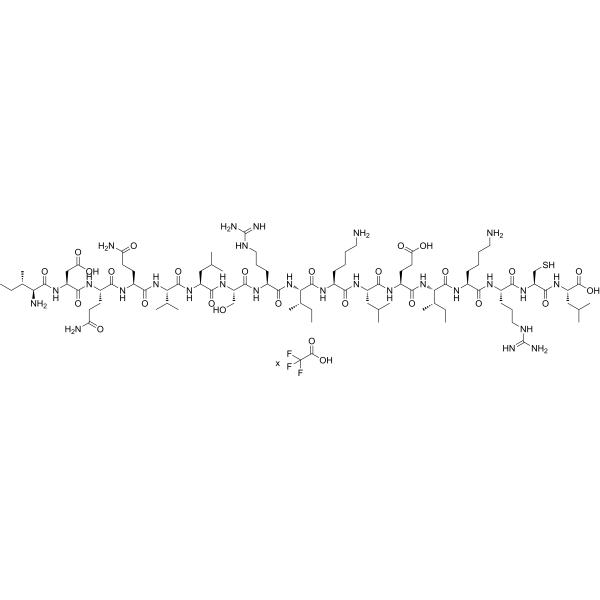
-
- HY-B0391
-
|
KT-611; BM-15275
|
Adrenergic Receptor
|
Cardiovascular Disease
Endocrinology
|
|
Naftopidil (KT-611) is is a selective alpha1-adrenoceptor antagonist, with Kis of 3.7 nM, 20 nM and 1.2 nM for the cloned human α1a-, α1b- and α1d-adrenoceptor subtypes, respectively. Naftopidil has antiproliferative effects. Naftopidil can be used for the research of prostate hyperplasia .
|
-
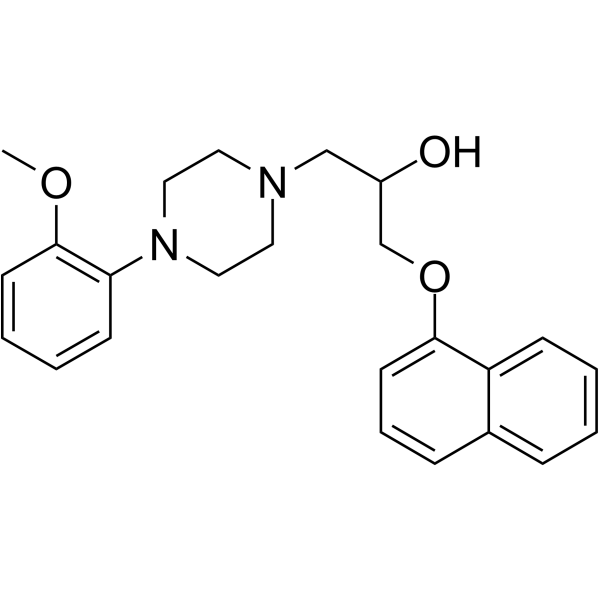
-
- HY-B0391A
-
|
KT-611 dihydrochloride; BM-15275 dihydrochloride
|
Adrenergic Receptor
|
Cancer
|
|
Naftopidil dihydrochloride (KT-611 dihydrochloride) is a selective alpha1-adrenoceptor antagonist, with Kis of 3.7 nM, 20 nM and 1.2 nM for the cloned human α1a-, α1b- and α1d-adrenoceptor subtypes, respectively. Naftopidil dihydrochloride has antiproliferative effects. Naftopidil dihydrochloride can be used for the research of prostate hyperplasia .
|
-

-
- HY-P3412
-
|
|
MAPKAPK2 (MK2)
|
Inflammation/Immunology
|
|
MMI-0100 is a cell-permeant peptide inhibitor of mitogen activated protein kinase activated protein kinase II (MK2). MMI-0100 reduces intimal hyperplasia ex vivo and in vivo. MMI-0100 suppresses IL-6 expression without effect on IL-8 expression. MMI-0100 suppresses fibrotic processes such as vein graft disease .
|
-
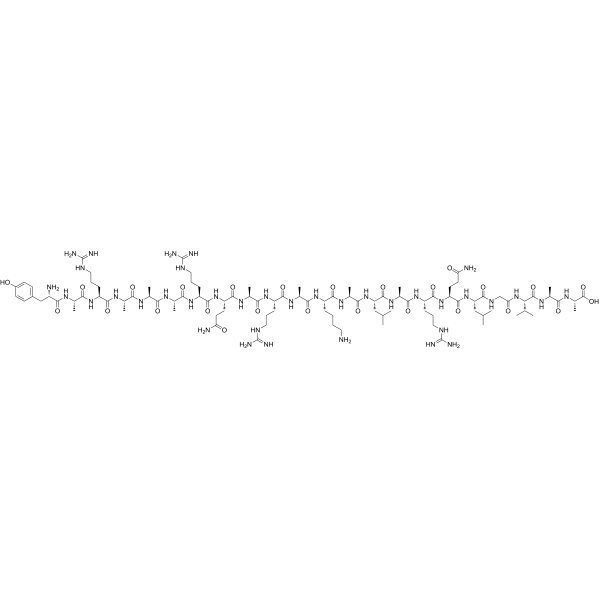
-
- HY-B0371
-
|
|
Adrenergic Receptor
|
Metabolic Disease
Endocrinology
|
|
Terazosin is a quinazoline derivative and a competitive and orally active α1-adrenoceptor antagonist. Terazosin works by relaxing blood vessels and the opening of the bladder. Terazosin has the potential for benign prostatic hyperplasia (BPH) and high blood pressure treatment .
|
-
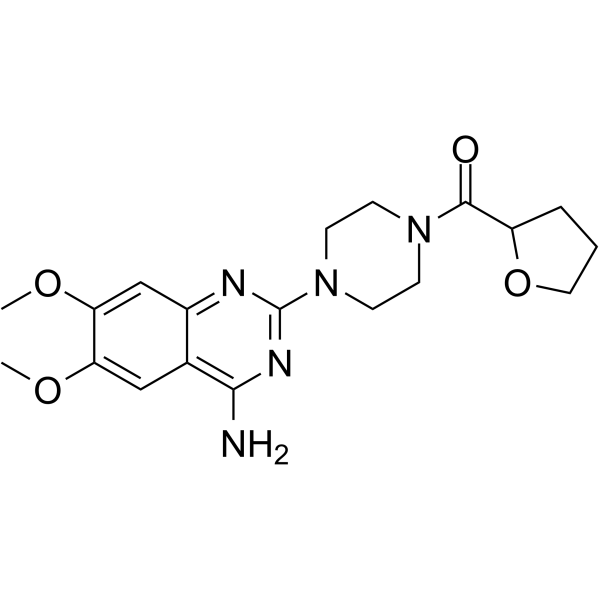
-
- HY-B0371F
-
|
|
Adrenergic Receptor
|
Metabolic Disease
Endocrinology
|
|
Terazosin hydrochloride is a quinazoline derivative and a competitive and orally active α1-adrenoceptor antagonist. Terazosin hydrochloride works by relaxing blood vessels and the opening of the bladder. Terazosin hydrochloride has the potential for benign prostatic hyperplasia (BPH) and high blood pressure treatment .
|
-
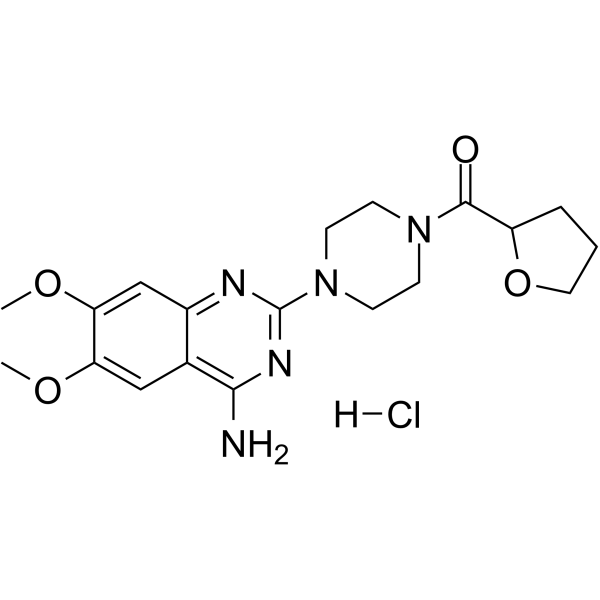
-
- HY-107637
-
|
|
MMP
|
Cardiovascular Disease
|
|
ONO-4817 is a potent inhibitor of matrix metalloproteinase (MMP). Inhibition of matrix metalloproteinases (MMPs) is expected to suppress atherosclerotic neointimal proliferation and thus limits atheromatous plaque progression. ONO-4817 suppresses the development of aortic intimal hyperplasia in experimental hyperlipidemic rabbit .
|
-

-
- HY-B0371A
-
|
|
Adrenergic Receptor
|
Metabolic Disease
Endocrinology
|
|
Terazosin hydrochloride dihydrate is a quinazoline derivative and a competitive and orally active α1-adrenoceptor antagonist. Terazosin hydrochloride dihydrate works by relaxing blood vessels and the opening of the bladder. Terazosin hydrochloride dihydrate has the potential for benign prostatic hyperplasia (BPH) and high blood pressure treatment .
|
-

-
- HY-107385
-
|
ONO-9302; SKF105657
|
5 alpha Reductase
|
Cancer
|
|
Epristeride (ONO-9302) is a selective, specific and orally active uncompetitive inhibitor of human steroid 5 alpha-reductase isoform 2. Epristeride has inhibitory effects for SR isoenzymes types 2 with Ki value of 0.7-2 nM. Epristeride can be used for the research of prostatic hyperplasia and acne .
|
-
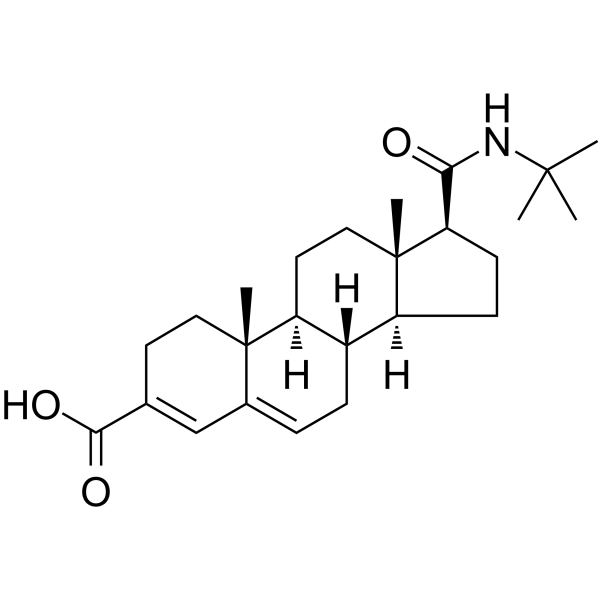
-
- HY-N8850
-
|
|
Others
|
Cancer
|
|
Angelol G, a coumarin, can be isolated from Campylotropis hirtella. Angelol G shows inhibitory activity for prostate specific antigen (PSA)IC50 value of 152.1μM. Angelol G can be used for the research of benign prostate hyperplasia (BPH) .
|
-
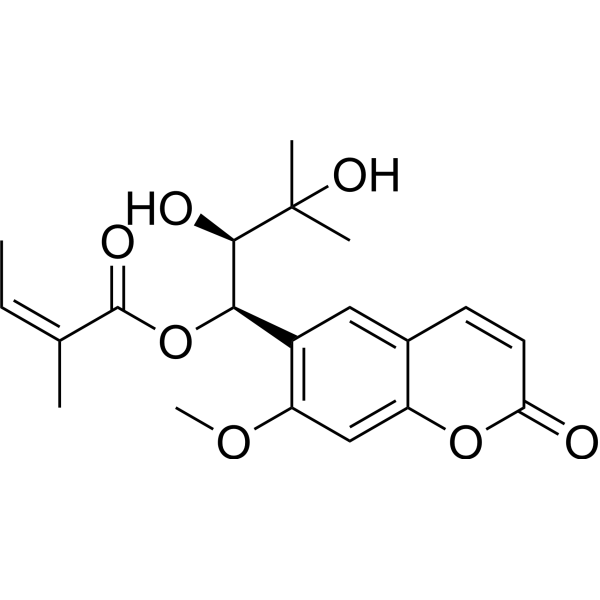
-
- HY-13635
-
|
MK-906
|
5 alpha Reductase
|
Cancer
|
|
Finasteride (MK-906) is a potent and competitive 5α-reductase inhibitor, with an IC50 of 4.2 nM for type II 5α-reductase. Finasteride has approximately a 100-fold greater affinity for type II 5α-reductase enzyme than for the type I enzyme. Finasteride can be used for the research of benign prostatic hyperplasia (BPH) and androgenic alopecia .
|
-

-
- HY-13635A
-
|
MK-906 acetate
|
5 alpha Reductase
|
Cancer
|
|
Finasteride (MK-906) acetate is a potent and competitive 5α-reductase inhibitor, with an IC50 of 4.2 nM for type II 5α-reductase. Finasteride acetate has approximately a 100-fold greater affinity for type II 5α-reductase enzyme than for the type I enzyme. Finasteride acetate can be used for the research of benign prostatic hyperplasia (BPH) and androgenic alopecia .
|
-
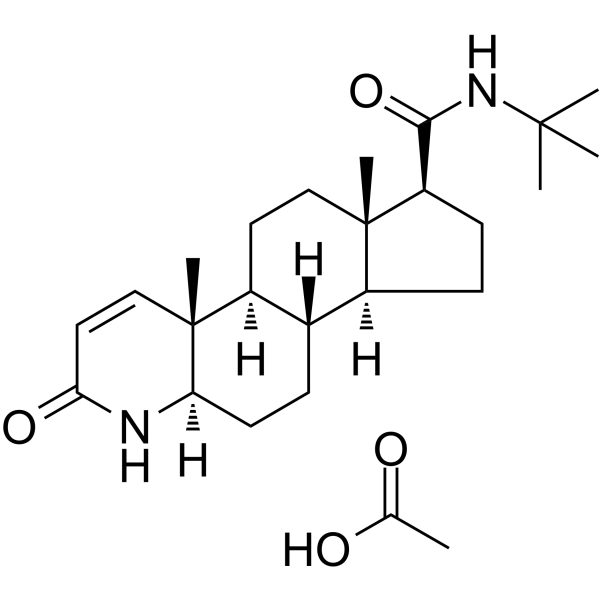
-
- HY-103204
-
|
|
Adrenergic Receptor
|
Endocrinology
|
|
RS100329 hydrochloride is a potent and selective α1A-adrenoceptor antagonist with pKi values of 9.6, 7.9 and 7.5 for α1A, α1D, and α1B, respectively. RS100329 hydrochloride inhibits reflex urethral contractions. RS100329 hydrochloride can be used in research of benign prostatic hyperplasia .
|
-
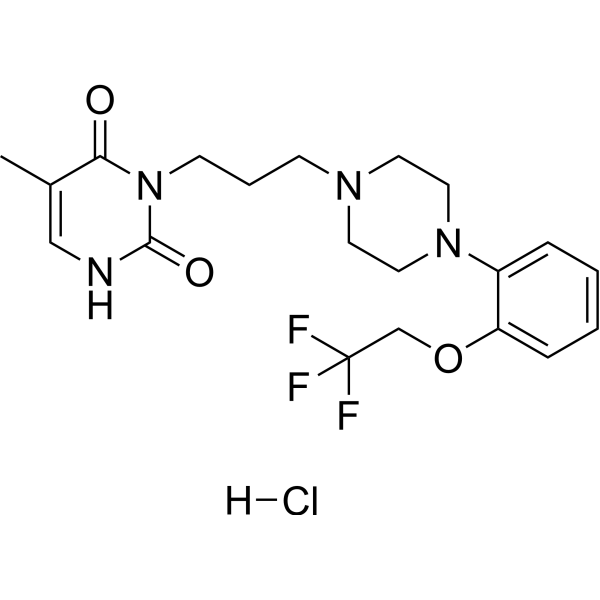
-
- HY-113405S1
-
-
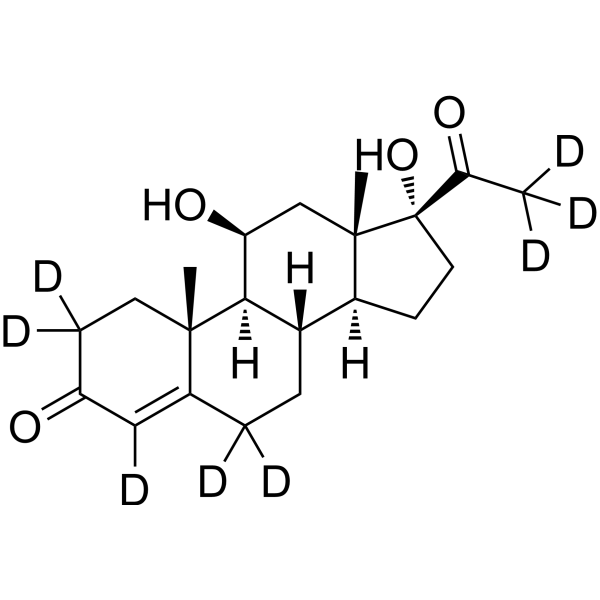
-
- HY-115450
-
|
|
LPL Receptor
|
Endocrinology
Cancer
|
|
ONO-0300302 is an orally active and potent LPA1 (lysophosphatidic acid receptor 1) antagonist, with an IC50 of 0.086 μM. ONO-0300302 is a slow tight binding inhibitor, and its binding affinity increases with time, with Kd of 0.34 nM (37 °C, 2 h). ONO-0300302 can be used for benign prostatic hyperplasia (BPH) research .
|
-
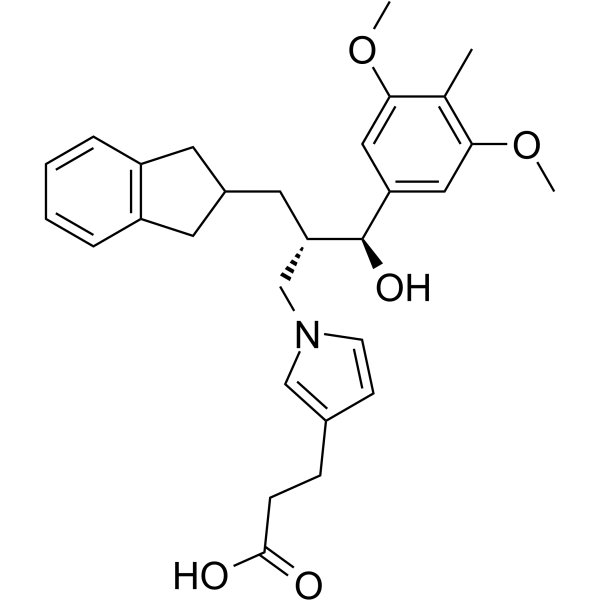
-
- HY-B0192AS1
-
|
SL 77499-10-d7
|
Adrenergic Receptor
|
Endocrinology
|
|
Alfuzosin-d7 (hydrochloride) is the deuterium labeled Alfuzosin hydrochloride. Alfuzosin hydrochloride is an α1 adrenergic receptor antagonist used to treat benign prostatic hyperplasia (BPH).
|
-
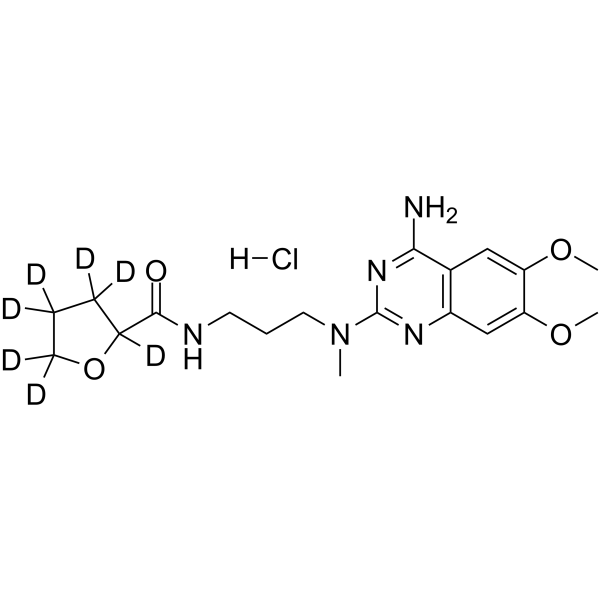
-
- HY-B0391S1
-
|
KT-611-d5; BM-15275-d5
|
Isotope-Labeled Compounds
Adrenergic Receptor
|
Cardiovascular Disease
Endocrinology
|
|
Naftopidil-d5 is deuterium labeled Naftopidil. Naftopidil (KT-611) is is a selective alpha1-adrenoceptor antagonist, with Kis of 3.7 nM, 20 nM and 1.2 nM for the cloned human α1a-, α1b- and α1d-adrenoceptor subtypes, respectively. Naftopidil has antiproliferative effects. Naftopidil can be used for the research of prostate hyperplasia[1][2].
|
-

-
- HY-P2563
-
|
|
Angiotensin Receptor
|
Metabolic Disease
|
|
[Tyr(P)4] Angiotensin II is a peptide that has multiple effects on vascular smooth muscle, including contraction of normal arteries and hypertrophy or hyperplasia of cultured cells or diseased vessels .
|
-
![[Tyr(P)4] Angiotensin II](//file.medchemexpress.com/product_pic/hy-p2563.gif)
-
- HY-P1564
-
-
![[Sar1, Ile8]-Angiotensin II](//file.medchemexpress.com/product_pic/hy-p1564.gif)
-
- HY-P1564A
-
|
AngiotensinII TFA; Angiotensin 2 TFA
|
Angiotensin Receptor
|
Others
|
|
[Sar1, Ile8]-Angiotensin II (TFA) is a peptide that has multiple effects on vascular smooth muscle, including contraction of normal arteries and hypertrophy or hyperplasia of cultured cells or diseased vessels.
|
-
![[Sar1, Ile8]-Angiotensin II TFA](//file.medchemexpress.com/product_pic/hy-p1564a.gif)
-
- HY-105173
-
|
EP 24332
|
GnRH Receptor
Histamine Receptor
|
Endocrinology
Cancer
|
|
Teverelix (EP 24332) is a GnRH antagonist. Teverelix binds competitively and reversibly to GnRH receptors, thereby suppressing the release of LH and FSH. Teverelix can be used in the research of prostatic hyperplasia, endometriosis, and prostate cancer .
|
-
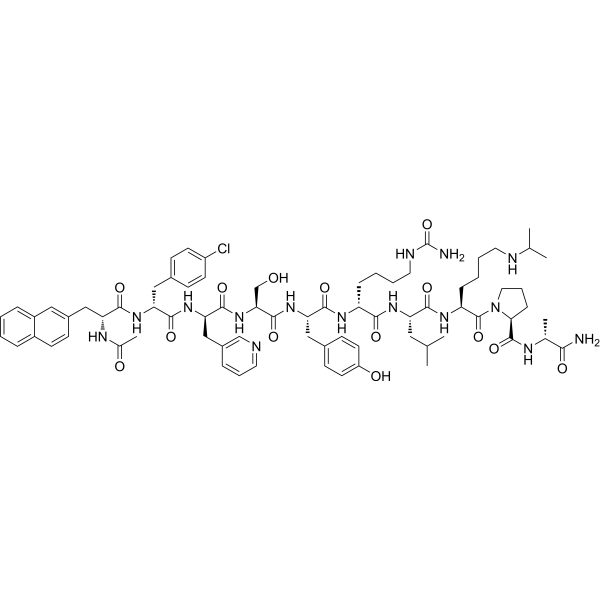
-
- HY-N8856
-
|
|
Others
|
Others
|
|
Angelol M,isolated from the roots of Angelica gigas Nakai, shows activity in inhibiting prostate specific antigen (PSA) secreted from androgen dependent prostate cancer cell line, LNCaP cells .
|
-

-
- HY-B0661A
-
-
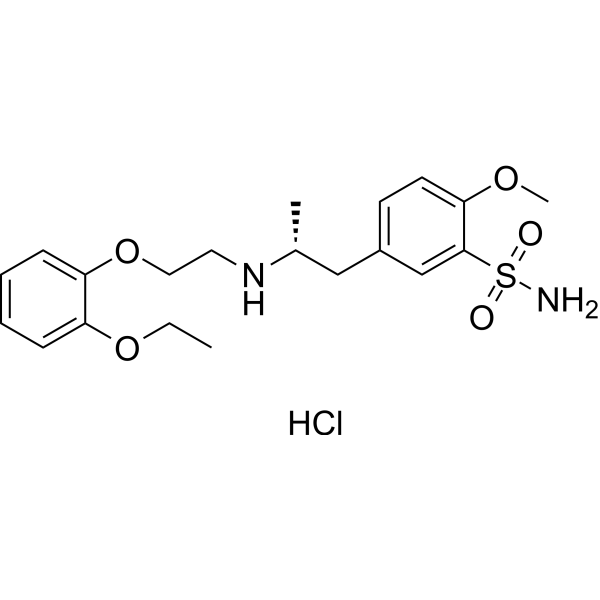
-
- HY-B0192A
-
|
SL 77499-10
|
Adrenergic Receptor
|
Endocrinology
|
|
Alfuzosin (SL 77499-10) hydrochloride is an orally active, selective and competitive α1-adrenoceptor antagonist. Alfuzosin hydrochloride relaxes the muscles of the prostate and bladder neck, aiding in urination. Alfuzosin hydrochloride can be used in study of benign prostatic hyperplasia (BPH) .
|
-
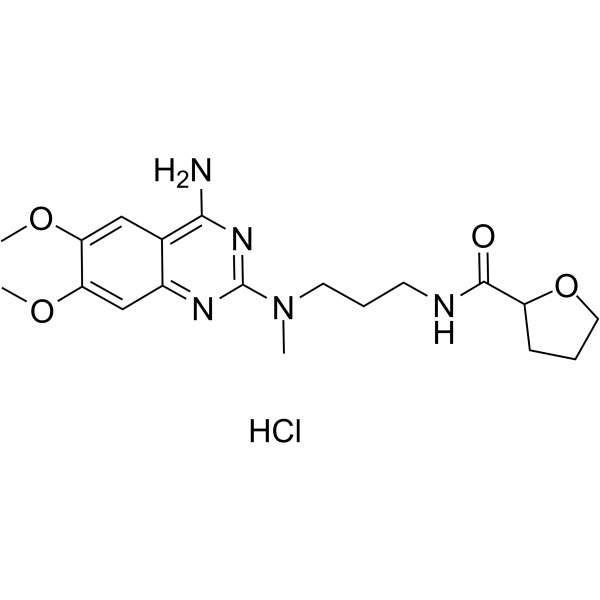
-
- HY-B0192
-
|
SL 77499
|
Adrenergic Receptor
|
Endocrinology
|
|
Alfuzosin (SL 77499-10) is an orally active, selective and competitive α1-adrenoceptor antagonist. Alfuzosin relaxes the muscles of the prostate and bladder neck, aiding in urination. Alfuzosin can be used in study of benign prostatic hyperplasia (BPH) .
|
-

-
- HY-147152
-
|
|
Others
|
Others
|
|
1-Myristoyl-3-chloropropanediol is a 3-monochloropropanediol (3-MCPD) fatty acid ester. 3-MPCD causes nephropathy and tubular hyperplasia and adenomas by chronic oral administration; also reduces fertility, or provokes infertility in rats and suppresses the immune function .
|
-
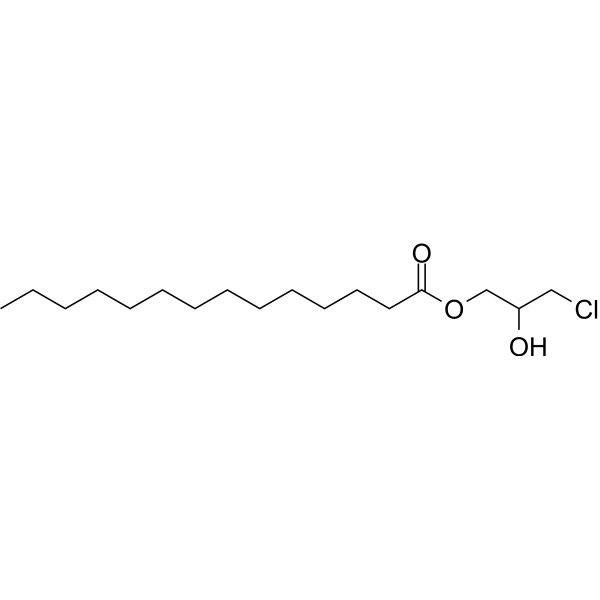
-
- HY-19702
-
|
|
Pyruvate Kinase
|
Metabolic Disease
Inflammation/Immunology
Cancer
|
|
PKR activator 3 is a pyruvate kinase isoform PKR activator extracted from patent WO2014139144A1, compound 160. PKR activator 3 can be used for the research of PKR function related diseases, including cancer, diabetes, obesity, autoimmune disorders, and benign prostatic hyperplasia .
|
-

-
- HY-B0661AS
-
-

-
- HY-B0661AS1
-
-
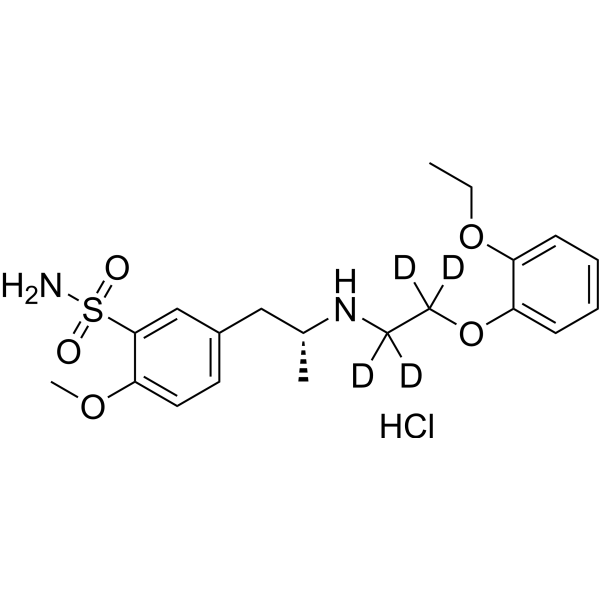
-
- HY-B0371S
-
|
|
Isotope-Labeled Compounds
Adrenergic Receptor
|
Metabolic Disease
Endocrinology
|
|
Terazosin-d8 is deuterium labeled Terazosin. Terazosin is a quinazoline derivative and a competitive and orally active α1-adrenoceptor antagonist. Terazosin works by relaxing blood vessels and the opening of the bladder. Terazosin has the potential for benign prostatic hyperplasia (BPH) and high blood pressure treatment[1][2][3].
|
-
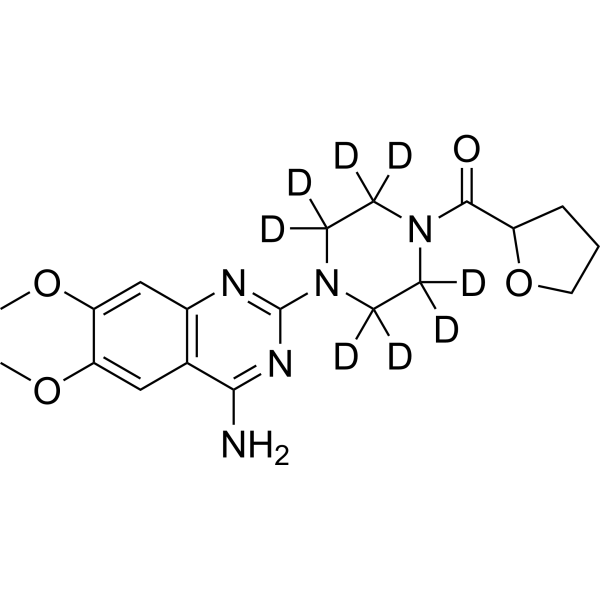
-
- HY-B0192S
-
|
SL 77499-d7
|
Adrenergic Receptor
|
Endocrinology
|
|
Alfuzosin-d7 is the deuterium labeled Alfuzosin[1]. Alfuzosin (SL 77499-10) is an orally active, selective and competitive α1-adrenoceptor antagonist. Alfuzosin relaxes the muscles of the prostate and bladder neck, aiding in urination. Alfuzosin can be used in study of benign prostatic hyperplasia (BPH)[2][3].
|
-
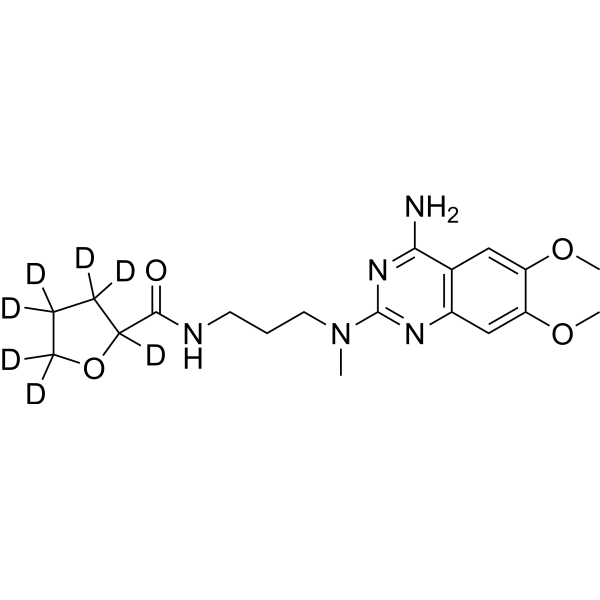
-
- HY-P99588
-
|
MYO-029
|
TGF-β Receptor
|
Metabolic Disease
|
|
Stamulumab (MYO-029) is a recombinant human IgG1λ antibody that binds to myostatin and neutralizes its activity by preventing binding to its endogenous high-affinity receptor ActRIIB. Stamulumab leads to muscle fiber hypertrophy and not hyperplasia in SCID mice. Stamulumab has the potential for Becker muscular dystrophy (BMD), facioscapulohumeral dystrophy (FSHD), and limb-girdle muscular dystrophy (LGMD) research .
|
-

-
- HY-103459
-
|
PD156707
|
Endothelin Receptor
|
Cardiovascular Disease
|
|
CI-1020 (PD156707) is an orally active and selective antagonist targeting endothelin (ETA) with an IC50 value of 0.3 nM. CI-1020 blocks intimal hyperplasia in human saphenous veins completely in organ culture. CI 1020 inhibits hypoxic pulmonary hypertension and blocks ET-1-induced pressor responses following oral administration .
|
-
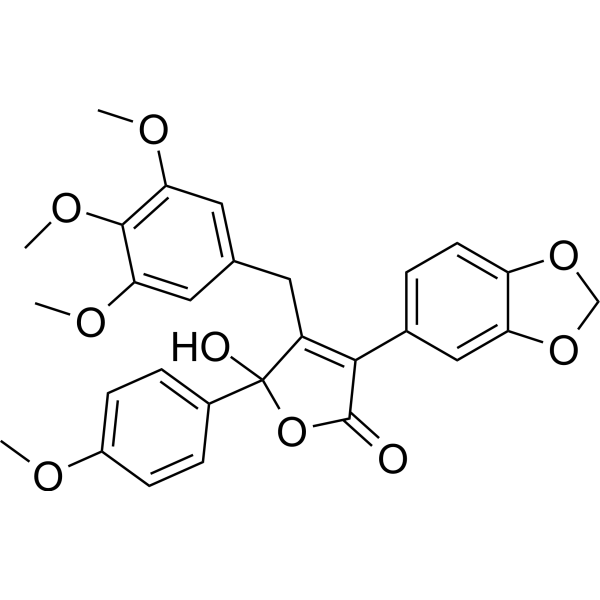
-
- HY-13810
-
|
|
Raf
|
Cancer
|
|
PF-04880594 is a potent and selective RAF inhibitor. PF-04880594 inhibits both wild-type and mutant BRAF and CRAF. PF-04880594 shows antitumor activity .
|
-
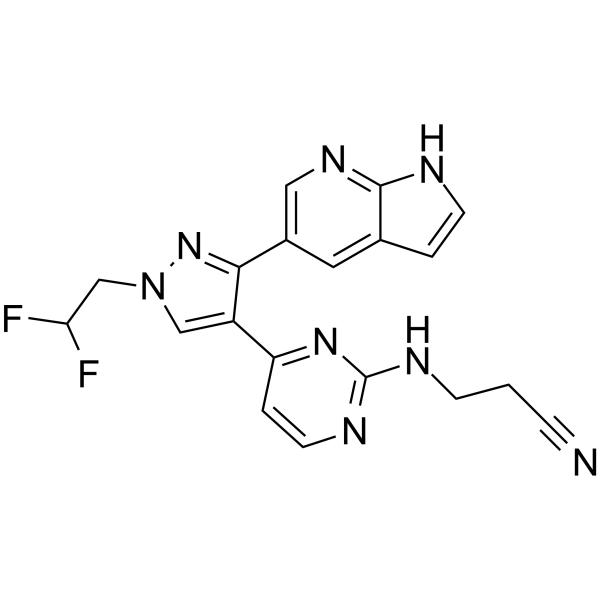
-
- HY-13635S
-
|
MK-906-d9
|
Isotope-Labeled Compounds
5 alpha Reductase
|
Cancer
|
|
Finasteride-d9 is deuterium labeled Finasteride. Finasteride (MK-906) is a potent and competitive 5α-reductase inhibitor, with an IC50 of 4.2 nM for type II 5α-reductase. Finasteride has approximately a 100-fold greater affinity for type II 5α-reductase enzyme than for the type I enzyme. Finasteride can be used for the research of benign prostatic hyperplasia (BPH) and androgenic alopecia[1][2][3].
|
-

-
- HY-13635R
-
|
MK-906 (Standard)
|
5 alpha Reductase
|
Cancer
|
|
Finasteride (Standard) is the analytical standard of Finasteride. This product is intended for research and analytical applications. Finasteride (MK-906) is a potent and competitive 5α-reductase inhibitor, with an IC50 of 4.2 nM for type II 5α-reductase. Finasteride has approximately a 100-fold greater affinity for type II 5α-reductase enzyme than for the type I enzyme. Finasteride can be used for the research of benign prostatic hyperplasia (BPH) and androgenic alopecia .
|
-
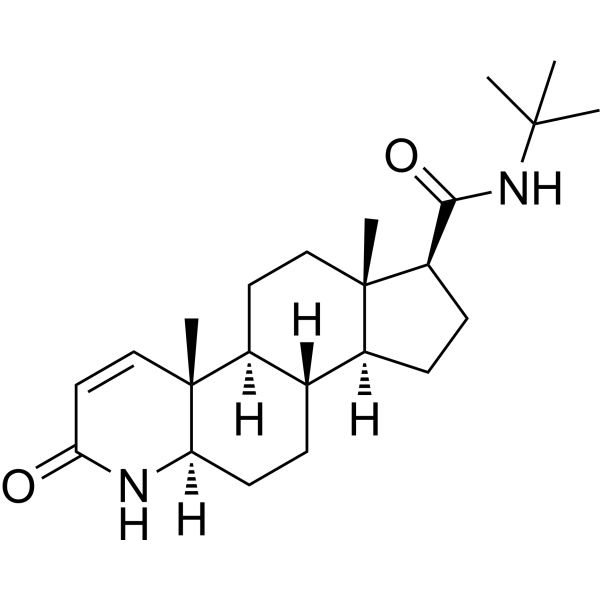
-
- HY-163176
-
|
|
STAT
|
Inflammation/Immunology
|
|
WB518 is a potent STAT3 inhibitor. WB518 effectively inhibits STAT3 activation and Keratin 17 expression. WB518 effectively alleviates imiquimod (HY-B0180) and TPA (HY-18739)-induced animal psoriasis by inhibiting STAT3 phosphorylation and Keratin 17 .
|
-
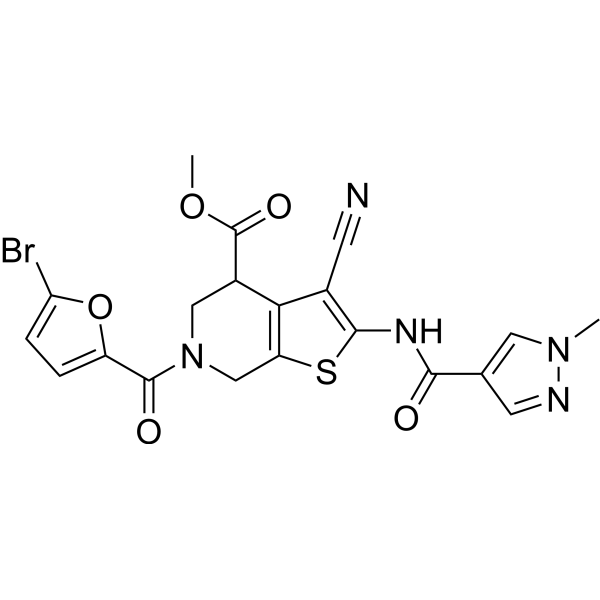
-
- HY-130622
-
|
|
Epigenetic Reader Domain
|
Inflammation/Immunology
|
|
LT052 is a highly selective BET BD1 inhibitor with an IC50 of 87.7 nM. LT052 exhibits nanomolar BRD4 BD1 potency and 138-fold selectivity over BRD4 BD2 (IC50=12.130 μM). LT052 has anti-inflammatory activity and can be used for acute gout arthritis research .
|
-
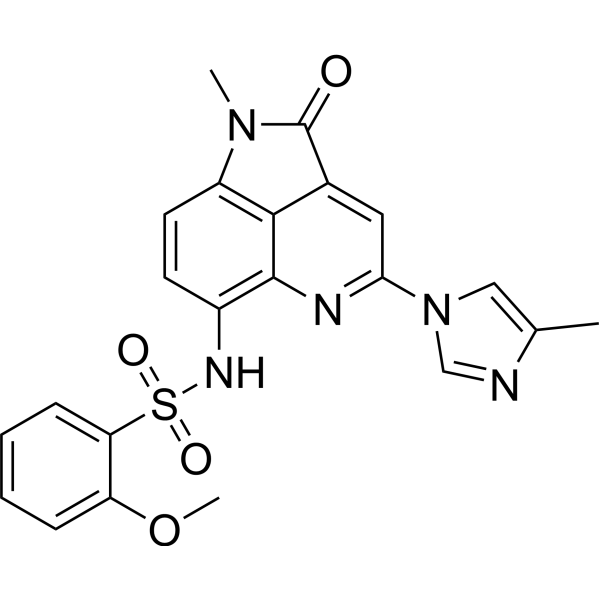
-
- HY-135473
-
|
|
Others
|
Others
|
|
Chlormadinone is an antiandrogen drug. Chlormadinone combined with Tamsulosin shows greater improvement in subjective symptoms of BPH .
|
-
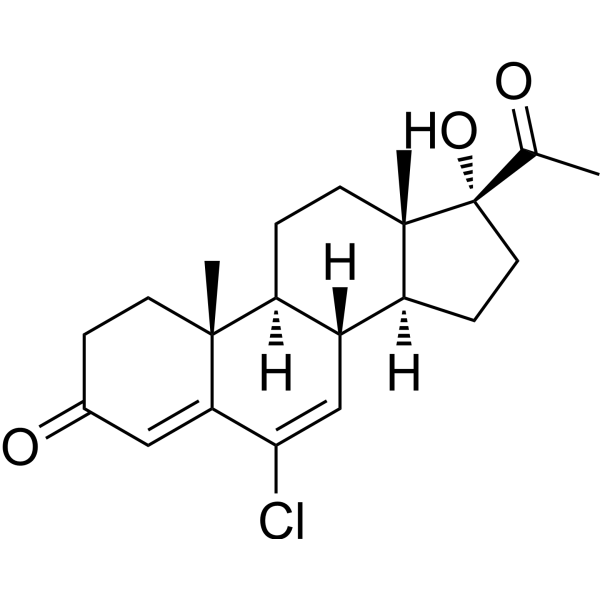
-
- HY-10122
-
|
KAD 3213; KMD 3213
|
Adrenergic Receptor
Bacterial
|
Endocrinology
Cancer
|
|
Silodosin (KAD 3213; KMD 3213) is a potent, selective and orally active α1A-adrenergic receptor (α1A-AR) blocker. Silodosin exhibits high affinity for α1A-AR (Ki=0.036 nM), over 162-fold and 50-fold than for α1B-AR and α1D-AR with Ki values of 21 nM and 2.0 nM, respectively. Silodosin is an effective and well-tolerated agent, it can be used for the investigation of LUTS/BPH .
|
-
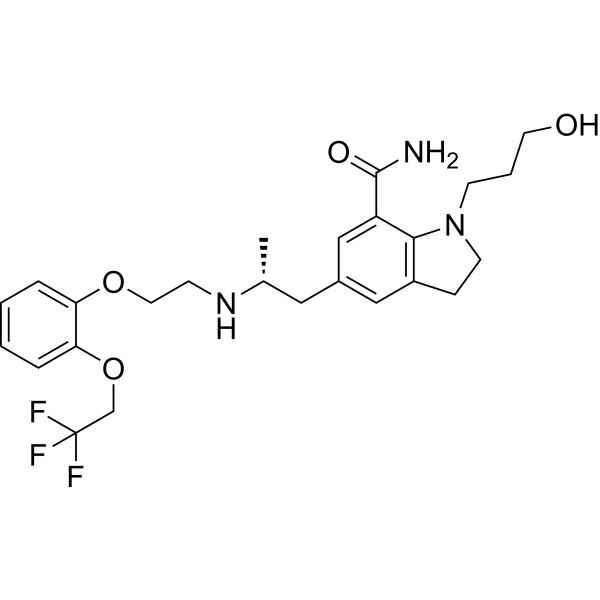
-
- HY-P9934
-
|
C7E3
|
Integrin
|
Cardiovascular Disease
|
|
Abciximab (C7E3), a chimeric mouse/human monoclonal antibody, is a glycoprotein (GP) IIb/IIIa inhibitor. Abciximab inhibits platelet aggregation and leucocyte adhesion by binding to the glycoprotein IIb/IIIa, vitronectin and Mac-1 receptors .
|
-

- HY-B0304A
-
|
LY-210448 hydrochloride
|
Serotonin Transporter
|
Neurological Disease
|
|
Dapoxetine (LY-210448) hydrochloride is an orally active and selective serotonin reuptake inhibitor (SSRI). Dapoxetine hydrochloride can be used for the research of premature ejaculation (PE) .
|
-
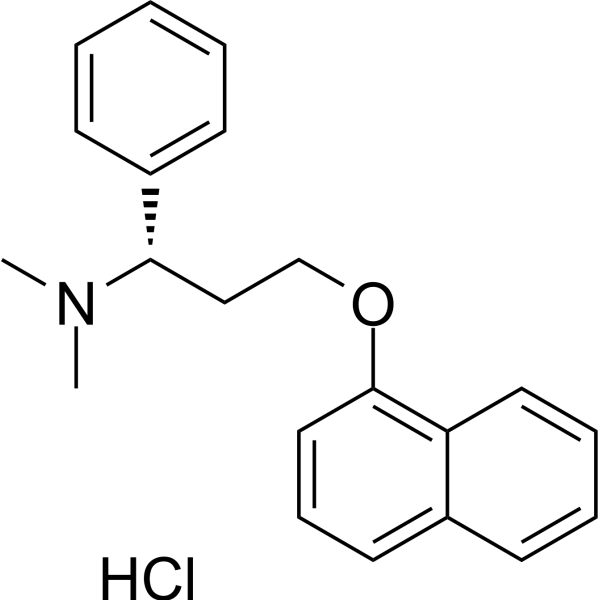
- HY-B0304
-
|
(S)-(+)-Dapoxetine; LY-210448
|
Serotonin Transporter
|
Neurological Disease
|
|
Dapoxetine (LY-210448) is an orally active and selective serotonin reuptake inhibitor (SSRI). Dapoxetine can be used for the research of premature ejaculation (PE) .
|
-
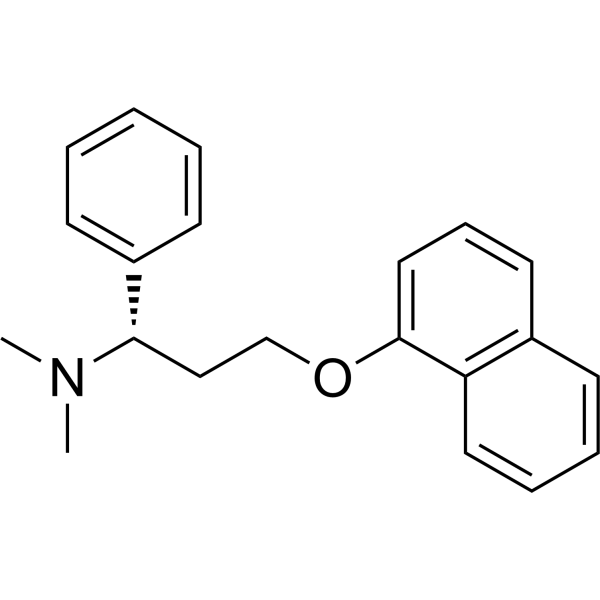
| Cat. No. |
Product Name |
Target |
Research Area |
-
- HY-P3412
-
|
|
MAPKAPK2 (MK2)
|
Inflammation/Immunology
|
|
MMI-0100 is a cell-permeant peptide inhibitor of mitogen activated protein kinase activated protein kinase II (MK2). MMI-0100 reduces intimal hyperplasia ex vivo and in vivo. MMI-0100 suppresses IL-6 expression without effect on IL-8 expression. MMI-0100 suppresses fibrotic processes such as vein graft disease .
|
-
- HY-P1442
-
|
|
Adrenergic Receptor
|
Cancer
|
|
AdTx1 is a selective α1A-adrenoceptor antagonist (Ki: 0.35 nM). AdTx1 can be used for research of benign prostatic hyperplasia .
|
-
- HY-P3501
-
|
NX-1207 free acid
|
Apoptosis
|
Cancer
|
|
Fexapotide (NX-1207 free acid) induces apoptosis selectively, reducing prostate volume at a cellular level. Fexapotide can be used in lower urinary tract symptoms (LUTS) and benign prostatic hyperplasia (BPH) research .
|
-
- HY-P2563
-
|
|
Angiotensin Receptor
|
Metabolic Disease
|
|
[Tyr(P)4] Angiotensin II is a peptide that has multiple effects on vascular smooth muscle, including contraction of normal arteries and hypertrophy or hyperplasia of cultured cells or diseased vessels .
|
-
- HY-P1564
-
-
- HY-P1564A
-
|
AngiotensinII TFA; Angiotensin 2 TFA
|
Angiotensin Receptor
|
Others
|
|
[Sar1, Ile8]-Angiotensin II (TFA) is a peptide that has multiple effects on vascular smooth muscle, including contraction of normal arteries and hypertrophy or hyperplasia of cultured cells or diseased vessels.
|
-
- HY-105173
-
|
EP 24332
|
GnRH Receptor
Histamine Receptor
|
Endocrinology
Cancer
|
|
Teverelix (EP 24332) is a GnRH antagonist. Teverelix binds competitively and reversibly to GnRH receptors, thereby suppressing the release of LH and FSH. Teverelix can be used in the research of prostatic hyperplasia, endometriosis, and prostate cancer .
|
| Cat. No. |
Product Name |
Target |
Research Area |
-
- HY-P9934
-
|
C7E3
|
Integrin
|
Cardiovascular Disease
|
|
Abciximab (C7E3), a chimeric mouse/human monoclonal antibody, is a glycoprotein (GP) IIb/IIIa inhibitor. Abciximab inhibits platelet aggregation and leucocyte adhesion by binding to the glycoprotein IIb/IIIa, vitronectin and Mac-1 receptors .
|
-
- HY-P99588
-
|
MYO-029
|
TGF-β Receptor
|
Metabolic Disease
|
|
Stamulumab (MYO-029) is a recombinant human IgG1λ antibody that binds to myostatin and neutralizes its activity by preventing binding to its endogenous high-affinity receptor ActRIIB. Stamulumab leads to muscle fiber hypertrophy and not hyperplasia in SCID mice. Stamulumab has the potential for Becker muscular dystrophy (BMD), facioscapulohumeral dystrophy (FSHD), and limb-girdle muscular dystrophy (LGMD) research .
|
| Cat. No. |
Product Name |
Category |
Target |
Chemical Structure |
| Cat. No. |
Product Name |
Chemical Structure |
-
- HY-113405S1
-
|
|
|
21-Deoxycortisol-d8 is the deuterium labeled 21-Deoxycortisol. 21-Deoxycortisol is an endogenous metabolite. 21-Deoxycortisol is a sign of congenital adrenal hyperplasia[1].
|
-

-
- HY-B0192AS1
-
|
|
|
Alfuzosin-d7 (hydrochloride) is the deuterium labeled Alfuzosin hydrochloride. Alfuzosin hydrochloride is an α1 adrenergic receptor antagonist used to treat benign prostatic hyperplasia (BPH).
|
-

-
- HY-B0391S1
-
|
|
|
Naftopidil-d5 is deuterium labeled Naftopidil. Naftopidil (KT-611) is is a selective alpha1-adrenoceptor antagonist, with Kis of 3.7 nM, 20 nM and 1.2 nM for the cloned human α1a-, α1b- and α1d-adrenoceptor subtypes, respectively. Naftopidil has antiproliferative effects. Naftopidil can be used for the research of prostate hyperplasia[1][2].
|
-

-
- HY-B0661AS
-
|
|
|
Tamsulosin-d5 (hydrochloride) is the deuterium labeled Tamsulosin hydrochloride. Tamsulosin hydrochloride ((R)-(-)-YM12617) is an inhibitor of α1-adrenergic receptor. Tamsulosin hydrochloride is used for the research of prostatic hyperplasia. Tamsulosin hydrochloride attenuates abdominal aortic aneurysm growth in animal models[1].
|
-

-
- HY-B0661AS1
-
|
|
|
Tamsulosin-d4 (hydrochloride) is deuterium labeled Tamsulosin (hydrochloride). Tamsulosin hydrochloride ((R)-(-)-YM12617) is an inhibitor of α1-adrenergic receptor. Tamsulosin hydrochloride is used for the research of prostatic hyperplasia. Tamsulosin hydrochloride attenuates abdominal aortic aneurysm growth in animal models[1].
|
-

-
- HY-B0371S
-
|
|
|
Terazosin-d8 is deuterium labeled Terazosin. Terazosin is a quinazoline derivative and a competitive and orally active α1-adrenoceptor antagonist. Terazosin works by relaxing blood vessels and the opening of the bladder. Terazosin has the potential for benign prostatic hyperplasia (BPH) and high blood pressure treatment[1][2][3].
|
-

-
- HY-B0192S
-
|
|
|
Alfuzosin-d7 is the deuterium labeled Alfuzosin[1]. Alfuzosin (SL 77499-10) is an orally active, selective and competitive α1-adrenoceptor antagonist. Alfuzosin relaxes the muscles of the prostate and bladder neck, aiding in urination. Alfuzosin can be used in study of benign prostatic hyperplasia (BPH)[2][3].
|
-

-
- HY-13635S
-
|
|
|
Finasteride-d9 is deuterium labeled Finasteride. Finasteride (MK-906) is a potent and competitive 5α-reductase inhibitor, with an IC50 of 4.2 nM for type II 5α-reductase. Finasteride has approximately a 100-fold greater affinity for type II 5α-reductase enzyme than for the type I enzyme. Finasteride can be used for the research of benign prostatic hyperplasia (BPH) and androgenic alopecia[1][2][3].
|
-

| Cat. No. |
Product Name |
|
Classification |
-
- HY-106203A
-
|
SSR-125543 hydrochloride
|
|
Alkynes
|
|
Crinecerfont (SSR-125543) hydrochloride is a potent, orally active, non-peptide CRF1 receptor antagonist. Crinecerfont can be used for Classic congenital adrenal hyperplasia (CAH) research . Crinecerfont (hydrochloride) is a click chemistry reagent, it contains an Alkyne group and can undergo copper-catalyzed azide-alkyne cycloaddition (CuAAc) with molecules containing Azide groups.
|
-
- HY-106203
-
|
SSR-125543
|
|
Alkynes
|
|
Crinecerfont (SSR-125543) hydrochloride is a potent, orally active, non-peptide CRF1 receptor antagonist. Crinecerfont can be used for Classic congenital adrenal hyperplasia (CAH) research . Crinecerfont is a click chemistry reagent, it contains an Alkyne group and can undergo copper-catalyzed azide-alkyne cycloaddition (CuAAc) with molecules containing Azide groups.
|
Your information is safe with us. * Required Fields.
Inquiry Information
- Product Name:
- Cat. No.:
- Quantity:
- MCE Japan Authorized Agent:
































![[Tyr(P)4] Angiotensin II](http://file.medchemexpress.com/product_pic/hy-p2563.gif)
![[Sar1, Ile8]-Angiotensin II](http://file.medchemexpress.com/product_pic/hy-p1564.gif)
![[Sar1, Ile8]-Angiotensin II TFA](http://file.medchemexpress.com/product_pic/hy-p1564a.gif)

























